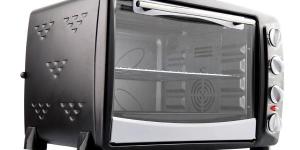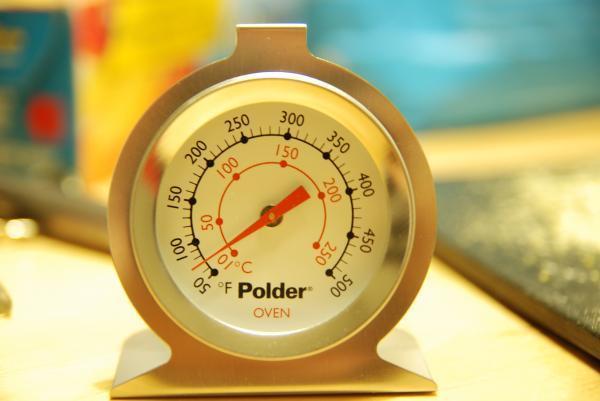How to Use a Gas Oven


Ever wonder why professional chefs love gas ovens? It's all about the heat! Gas ovens deliver powerful blasts that cook food fast and evenly (perfect for crispy roasts and fluffy cakes). But unlike their electric counterparts, gas ovens can have temperature fluctuations. This might seem intimidating at first, but fear not.
This oneHOWTO article will explain everything you need to know about how to use a gas oven, from basic operation and temperature control to clever tricks and essential safety practices.
Steps to follow:
To operate a gas oven, the method of ignition depends on whether it has a pilot light or uses electronic ignition:
For gas ovens with a pilot light:
- Locate the pilot light inside the oven, typically found at the bottom. Look for a small metal piece in the center when you open the oven door.
- Use a match or lighter to ignite the pilot light through its designated hole.
- Once lit, a blue flame indicates the pilot light is functioning.
- Adjust the oven temperature using the control knobs or buttons to start cooking.
For modern gas ovens with electronic ignition:
- Ensure the oven is plugged in and powered on.
- Set the desired temperature using the oven's control panel.
- The oven will automatically ignite the gas with an electric spark.
Always consult the oven's manual for specific instructions, as procedures can vary by model. If you encounter a strong gas odor or difficulty lighting the oven, turn off the gas supply immediately and seek professional assistance.
Gas ovens typically reach higher temperatures faster than electric ovens due to the immediate heat generated by burning gas. They also cool down faster once turned off.
Conventional gas ovens can have hot spots and cold spots, leading to uneven cooking. To mitigate this issue, convection gas ovens are recommended. These ovens have an internal fan that circulates hot air throughout the oven cavity, ensuring even distribution of heat. This fan helps eliminate hot and cold spots, resulting in more consistent cooking results.
Additionally, the fan in a convection gas oven improves air circulation, which can prevent food from becoming too moist during cooking. This feature is beneficial for achieving crisp and dry textures, especially when roasting or baking.

Gas ovens can sometimes have higher heat concentration at the bottom, which may result in the bottom of food items burning or cooking faster than the top. To prevent this issue, it's recommended to use a baking tray or casserole dish when placing food inside the oven. Here’s how using a baking tray or casserole dish helps:
- Placing food on a baking tray or casserole dish helps distribute heat more evenly around the food, reducing the risk of uneven cooking.
- The tray or dish acts as a barrier between the direct heat source at the bottom of the oven and the food, helping to prevent burning on the bottom. By providing a more balanced heat distribution, using a baking tray or casserole dish promotes more even cooking throughout the food item.
To further improve cooking results in a gas oven, especially for items prone to burning on the bottom, adjusting the oven rack position can also help. Placing the rack in the middle or upper position in the oven can reduce the intensity of heat exposure at the bottom and promote more uniform cooking.
In gas ovens, especially conventional ones, the temperature can sometimes be uneven due to variations in how gas is released and distributed throughout the cooking process. This can lead to potential concerns about the accuracy and consistency of the oven's internal temperature.
To ensure that your food is cooking at the desired temperature, it's advisable to use an oven thermometer. An oven thermometer provides an accurate reading of the internal temperature of the oven, independent of the oven's built-in temperature settings.
Place the oven thermometer in the center of the oven where your food is typically positioned. This allows you to monitor the actual temperature that the food is experiencing during cooking.
If you find discrepancies between the oven thermometer reading and the oven's set temperature, you can make adjustments accordingly. This may involve adjusting the oven settings or positioning the food differently within the oven to achieve more even cooking.
Explore the unique functionalities of electric ovens and unlock new culinary possibilities. Read more for details.

Placing the tray on the bottom shelf allows the food to be closer to the direct heat source at the bottom of the oven. This can be advantageous for foods that benefit from more intense heat from below, such as pizzas or breads that require a crispy bottom crust.
Placing the tray on the top shelf reduces the intensity of heat from the bottom and exposes the food more to the radiant heat from the top of the oven. This is useful for dishes that require gentle cooking or browning on the top, like casseroles or delicate pastries.
Placing food on the middle shelf provides a balance between heat from the top and bottom of the oven, promoting more even cooking. This position is ideal for roasts, baked goods, and dishes that require uniform heat distribution throughout the cooking process.
The choice of shelf position depends on the specific requirements of the recipe and the desired cooking outcome. Experimenting with different shelf positions can help you achieve the best results based on your preferences and the characteristics of your gas oven.
Ever wondered if a convection oven is right for you? Explore the pros and cons compared to traditional models in our dedicated article.
How to safely use a gas oven?
When using a gas oven, it's important to follow safety guidelines to ensure safe operation. Here are some key safety tips:
- Ensure there is adequate ventilation in the kitchen when using the gas oven. Open windows or use an exhaust fan to allow proper airflow and prevent the buildup of gas fumes.
- Regularly inspect the gas connections and hoses for any signs of leaks, such as hissing sounds or the smell of gas. If you suspect a gas leak, turn off the oven immediately, open windows, and avoid using any flames or electrical switches. Contact a professional to inspect and repair the leak.
- If your gas oven has a pilot light, ensure it is lit properly and functioning. Follow manufacturer instructions for relighting if necessary. If you notice the pilot light continuously going out, it may indicate a problem that requires professional attention.
- Use cookware that is suitable for gas ovens and stovetops. Ensure pots and pans are stable and flat-bottomed to prevent tipping or spills that could lead to burns or fires.
- Keep flammable items such as paper towels, oven mitts, and kitchen towels away from the oven and stovetop. Ensure that curtains and other flammable materials are not near the oven when it is in use.
- Stay in the kitchen while cooking, especially when using the oven. Monitor food closely to prevent overcooking or burning, which can lead to smoke or fire hazards.
- Keep the oven clean and free from grease buildup. Regularly remove crumbs and spills from the oven floor and walls to prevent them from catching fire during cooking.
Mastered the art of baking in your gas oven? Now learn how to keep it sparkling clean! Explore our oven cleaning tips for a stress-free kitchen routine.
If you want to read similar articles to How to Use a Gas Oven, we recommend you visit our Maintenance and home security category.
Tips
- After preheating, change the position of your oven to that of







